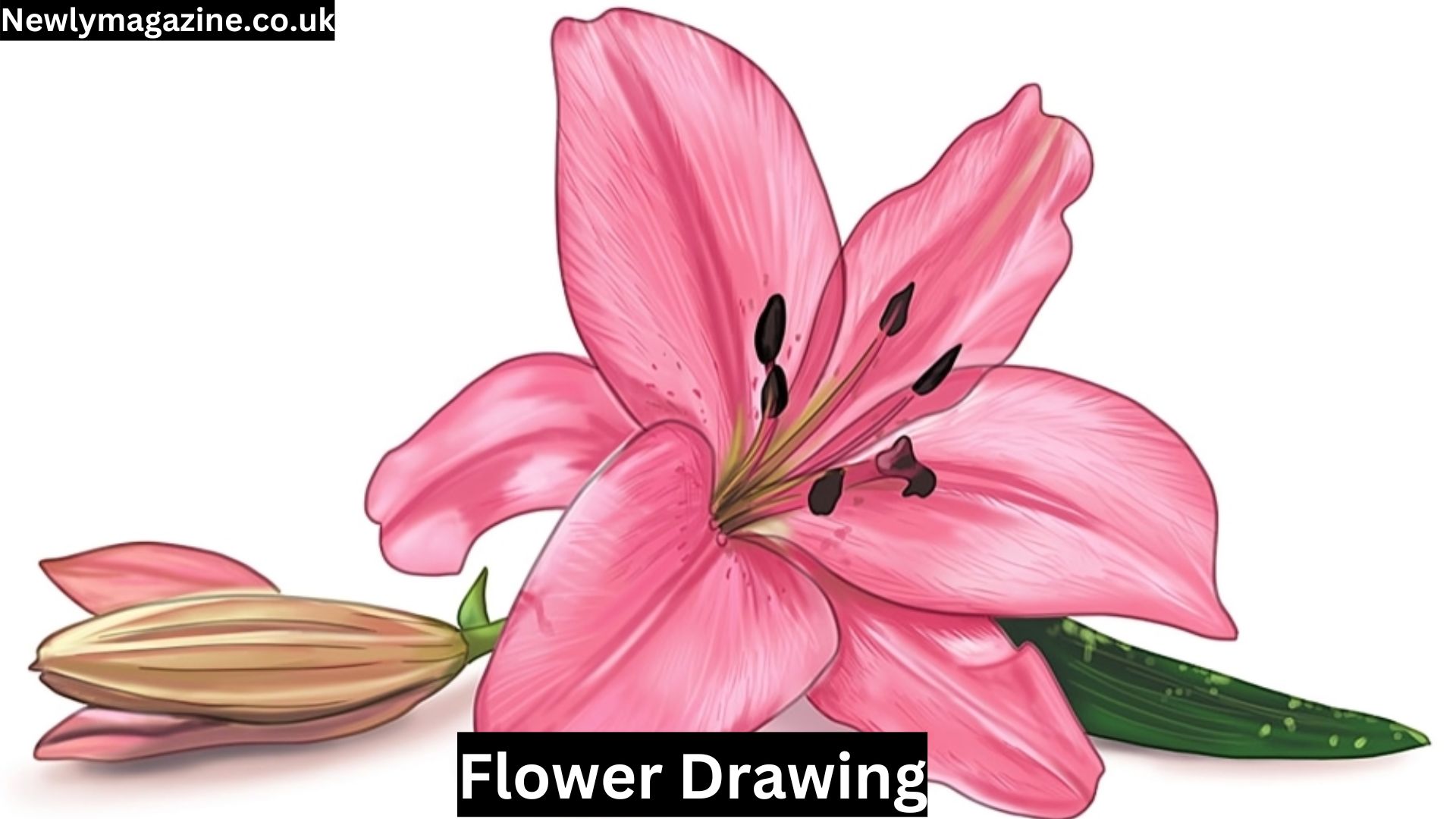Flower Drawing: A Comprehensive Guide
Drawing flowers is a timeless art form that captures the beauty and intricacy of nature. Whether you are a seasoned artist or a beginner looking to hone your skills, understanding the techniques and nuances of flower drawing can enhance your artistic journey. This guide delves deep into the art of flower drawing, providing step-by-step instructions, exploring various styles, and offering tips to help you create stunning floral artwork.
The Importance of Flower Drawing in Art
Flowers have been a popular subject in art for centuries. Their delicate petals, intricate structures, and vibrant colors make them an appealing subject for artists of all levels. Flower drawing is not only a way to capture the beauty of nature but also an excellent exercise in observing details, understanding shapes, and improving hand-eye coordination.
Historical Significance
Flowers have been depicted in art for thousands of years, dating back to ancient civilizations. In many cultures, flowers hold symbolic meanings, and their representation in art often carries deep spiritual or cultural significance. For example, in Japanese art, cherry blossoms symbolize the transient nature of life, while in European Renaissance art, flowers like the lily often represent purity and innocence.
Educational Value
For art students and enthusiasts, drawing flowers is a fundamental practice. It teaches important skills such as perspective, shading, and composition. Flowers, with their diverse shapes and forms, provide an excellent subject for studying line work and textures. Additionally, drawing flowers can be a meditative practice, helping artists to develop patience and attention to detail.
Getting Started: Tools and Materials for Flower Drawing
Before diving into the techniques of flower drawing, it’s essential to gather the right tools and materials. The quality of your tools can significantly impact the outcome of your artwork.
Basic Tools
- Pencils: A range of graphite pencils (from H to B) is ideal for flower drawing. H pencils are harder and produce lighter lines, while B pencils are softer and give darker, richer lines. A mechanical pencil can also be useful for detailed work.
- Erasers: A kneaded eraser is perfect for lightening lines without leaving residue, while a vinyl eraser is excellent for complete erasure.
- Paper: Smooth, heavy-weight paper is ideal for detailed pencil work. For ink drawings, consider using Bristol board, which is smooth and prevents ink from bleeding.
- Blending Tools: Tortillons or blending stumps help smooth out pencil shading, creating a softer, more realistic effect.
- Colored Pencils/Watercolors: If you plan to add color to your drawings, invest in high-quality colored pencils or watercolors. These tools will help bring your flower drawings to life with vibrant hues.
Optional Tools
- Ink Pens: For a more defined, stylized look, use ink pens. Micron pens are popular among artists for their precision.
- Charcoal: Charcoal is excellent for creating bold, dramatic flower drawings. It allows for deep contrasts and expressive lines.
- Markers: Alcohol-based markers can be used to add color and depth to your flower drawings, especially for modern, vibrant styles.
Understanding the Structure of Flowers
Before you begin drawing, it’s crucial to understand the basic structure of flowers. This knowledge will help you create more accurate and realistic depictions.
Anatomy of a Flower
- Petals: The most recognizable part of the flower, petals come in various shapes, sizes, and arrangements. Understanding how petals overlap and curve is key to drawing them realistically.
- Stamen and Pistil: The reproductive parts of the flower, often located in the center. These parts can be intricate, with filaments, anthers, and stigmas, depending on the flower species.
- Sepals: These are the green, leaf-like structures that protect the flower bud before it opens. Sepals can add a unique texture to your drawing.
- Stem and Leaves: The stem supports the flower, while the leaves add context and balance to your composition. The veins in leaves can provide an opportunity to practice fine line work.
Observing and Sketching
When drawing flowers, observation is key. Take the time to study your subject carefully. Note how the petals fold, the texture of the leaves, and the flower’s overall shape. Begin with a light sketch, focusing on the basic shapes. As you progress, add details and refine the lines.
Step-by-Step Guide to Drawing Flowers
This section provides a step-by-step guide to drawing a simple flower, such as a rose. The same principles can be applied to other types of flowers.
Step 1: Basic Shapes
Start by drawing the basic shapes that make up the flower. For a rose, begin with a small circle for the center, and then add an oval around it to represent the main body of the flower. These shapes will serve as guides for the placement of petals.
Step 2: Outline the Petals
Using the basic shapes as a guide, start sketching the petals. Begin with the innermost petals, which are usually the smallest and most tightly curled. Gradually work your way out, drawing larger petals that overlap one another. Remember to vary the shape and size of the petals to make the flower look more natural.
Step 3: Refine the Details
Once you have the basic outline, start adding details to the petals. Look for subtle curves and edges. Add the lines where the petals overlap, and refine the overall shape of the flower. Pay attention to the center of the flower and the way the petals curl inward.
Step 4: Add Shading
Shading is essential for creating depth and realism in your drawing. Start by identifying the light source and decide where the shadows will fall. Use a soft pencil (like a 2B or 4B) to add shadows to the areas where the petals overlap or curl. Use a blending tool to soften the shading and create a smooth transition between light and dark areas.
Step 5: Draw the Stem and Leaves
Once the flower is complete, draw the stem and leaves. Stems are usually cylindrical, so shading them to create a three-dimensional effect is important. Leaves can vary in shape, but most have a central vein with smaller veins branching off. Draw the veins lightly and add shading to the leaves to give them texture and volume.
Step 6: Final Touches
Review your drawing and make any necessary adjustments. Add any final details, such as small lines to indicate texture or additional shading to enhance depth. If you’re using color, this is the time to apply it. Layer colors gradually to create a rich, vibrant look.
Exploring Different Styles of Flower Drawing
Flower drawing can be approached in various styles, each with its own unique appeal. Experimenting with different styles can help you find your artistic voice.
Realistic Flower Drawing
Realism focuses on capturing the flower as it appears in real life. This style requires careful observation and attention to detail. Techniques like shading, blending, and layering are essential to achieving a lifelike effect.
Techniques for Realism
- Layering: Build up layers of shading gradually to create depth. Start with light layers and gradually add darker tones.
- Blending: Use blending tools to smooth out pencil strokes and create a soft, natural look.
- Texture: Pay attention to the texture of the petals and leaves. Use small, controlled pencil strokes to mimic the natural texture of the flower.
Stylized Flower Drawing
Stylized flower drawing simplifies the form and focuses on creating a design rather than a realistic representation. This style is popular in graphic design, illustration, and tattoo art.
Techniques for Stylization
- Simplification: Focus on the basic shapes and lines of the flower. Exaggerate or simplify certain elements to create a distinct style.
- Bold Lines: Use thick, bold lines to define the shapes and create contrast.
- Patterns: Incorporate patterns or repetitive elements into the design. This can add a decorative touch to your drawing.
Abstract Flower Drawing
Abstract drawing allows for more creativity and interpretation. In this style, the flower may not be recognizable, but the essence of its form is conveyed through shapes, colors, and lines.
Techniques for Abstraction
- Experimentation: Play with shapes, colors, and lines. There are no rules in abstract art, so feel free to explore different combinations.
- Contrast: Use contrasting colors and shapes to create visual interest.
- Expressive Lines: Focus on the movement and flow of the lines. This can convey the energy and emotion behind the flower.
Adding Color to Your Flower Drawings
Color can bring your flower drawings to life. Whether you choose to use colored pencils, watercolors, or markers, understanding color theory and techniques will enhance your artwork.
Color Theory Basics
Understanding the basics of color theory can help you choose the right colors for your drawing.
- Primary Colors: Red, blue, and yellow are the primary colors. These cannot be created by mixing other colors.
- Secondary Colors: Mixing two primary colors creates secondary colors: green, orange, and purple.
- Tertiary Colors: These are created by mixing a primary color with a secondary color.
Choosing a Color Palette
When choosing colors for your flower drawing, consider the mood you want to convey. Warm colors like red, orange, and yellow can evoke feelings of warmth and energy, while cool colors like blue, green, and purple create a calming effect.
Techniques for Coloring
- Colored Pencils: Layer colors gradually, starting with light pressure and building up to more intense colors. Use a colorless blender or a white pencil to blend and soften the colors.
- Watercolors: Start with a light wash of color and gradually build up the intensity. Watercolors are great for creating soft, transparent












Post Comment